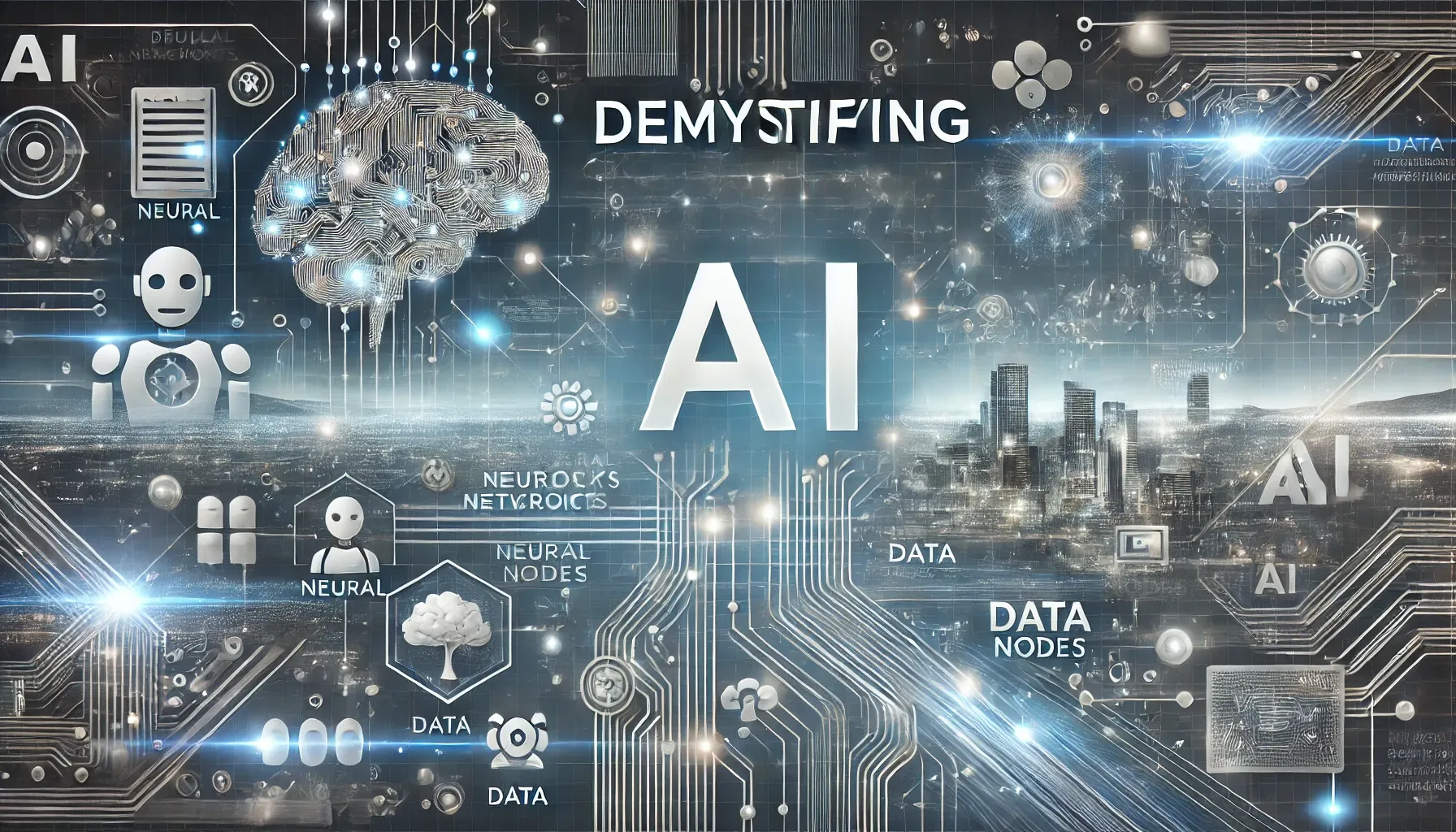Demystifying AI: A Glossary of 50+ Key Terms to Master AI Jargon

Artificial intelligence (AI) is reshaping industries and redefining how we interact with technology. However, the jargon surrounding AI can be overwhelming, especially for newcomers. This comprehensive glossary breaks down 50+ key AI terms, organized into categories for easy navigation. Whether you're a business professional, developer, or curious learner, mastering these terms will empower you to understand and leverage AI effectively.
1. Core AI Concepts
- Artificial Intelligence (AI): The simulation of human intelligence in machines that can perform tasks like reasoning, learning, and decision-making.
- Machine Learning (ML): A subset of AI that enables machines to learn from data without explicit programming.
- Deep Learning: A branch of ML that uses neural networks with multiple layers to process complex data.
- Neural Network: A computational model inspired by the human brain, consisting of interconnected nodes (neurons).
- Algorithm: A set of instructions designed to perform a specific task or solve a problem.
- General AI: AI systems capable of performing any intellectual task a human can do.
- Narrow AI: AI designed to perform a specific task, such as image recognition or language translation.
2. Data and Training
- Dataset: A collection of data used to train or test an AI model.
- Training Data: Data used to teach an AI model how to perform a task.
- Test Data: Data used to evaluate the performance of a trained model.
- Overfitting: When a model learns too much from the training data, performing poorly on new data.
- Underfitting: When a model fails to capture patterns in the training data, leading to poor performance.
- Feature: An individual measurable property or characteristic used in AI models.
- Label: The output or result associated with a data point in supervised learning.
3. Techniques and Processes
- Supervised Learning: A type of ML where the model learns from labeled data.
- Unsupervised Learning: A type of ML where the model identifies patterns in unlabeled data.
- Reinforcement Learning: A type of ML where an agent learns by interacting with an environment and receiving rewards or penalties.
- Natural Language Processing (NLP): A field of AI focused on enabling machines to understand and generate human language.
- Computer Vision: A field of AI that enables machines to interpret and analyze visual data.
- Transfer Learning: Reusing a pre-trained model on a new but related task.
- Gradient Descent: An optimization algorithm used to minimize the loss function in training models.
4. AI Infrastructure
- Model: A mathematical representation of a problem that an AI system uses to make predictions.
- Framework: A software library providing tools for building and training AI models (e.g., TensorFlow, PyTorch).
- Cloud Computing: Using remote servers to store and process AI models and data.
- Edge AI: Running AI models locally on devices rather than in the cloud.
- GPU (Graphics Processing Unit): Hardware optimized for parallel processing, often used in AI training.
- API (Application Programming Interface): A set of tools that allow different software systems to communicate, often used to integrate AI capabilities.
5. Metrics and Evaluation
- Accuracy: The proportion of correct predictions made by a model.
- Precision: The proportion of true positive predictions among all positive predictions.
- Recall: The proportion of true positive predictions among all actual positives.
- F1 Score: The harmonic mean of precision and recall.
- Confusion Matrix: A table used to evaluate model performance, showing true positives, false positives, true negatives, and false negatives.
- AUC-ROC (Area Under the Curve - Receiver Operating Characteristic): A metric for evaluating the performance of classification models.
6. Emerging Trends
- Generative AI: AI systems that can create content, such as text, images, or music (e.g., ChatGPT, DALL-E).
- Explainable AI (XAI): Techniques to make AI decisions transparent and understandable.
- Ethical AI: The practice of designing AI systems that are fair, unbiased, and aligned with societal values.
- Federated Learning: A collaborative ML approach where data stays on devices while models are trained centrally.
- Digital Twin: A virtual representation of a physical object or system, used for simulation and analysis.
- Autonomous Systems: AI-powered systems capable of performing tasks without human intervention (e.g., self-driving cars).
7. Common AI Tools and Platforms
- OpenAI: A leading AI research lab developing tools like GPT and DALL-E.
- Google AI: Google's AI division focused on advancing ML research and products.
- Amazon Web Services (AWS): Cloud platform offering AI and ML tools.
- Microsoft Azure AI: A suite of AI services and tools from Microsoft.
- Hugging Face: A platform for building, training, and deploying NLP models.
- Postly: A cutting-edge platform for generative AI applications in marketing and content creation.
8. Challenges and Risks
- Bias: Systematic errors in AI caused by imbalanced or prejudiced training data.
- Adversarial Attacks: Attempts to fool AI models with misleading inputs.
- Data Privacy: Concerns about how data is collected, stored, and used in AI systems.
- Scalability: The ability of an AI system to handle increasing amounts of data or tasks.
- Black Box: A term for AI systems whose decision-making processes are not transparent or explainable.
Final Thoughts
Understanding these key AI terms will help you navigate conversations, make informed decisions, and stay ahead in this rapidly evolving field. Whether you're building AI systems or simply trying to grasp their impact, mastering this glossary is a crucial first step toward AI fluency.

